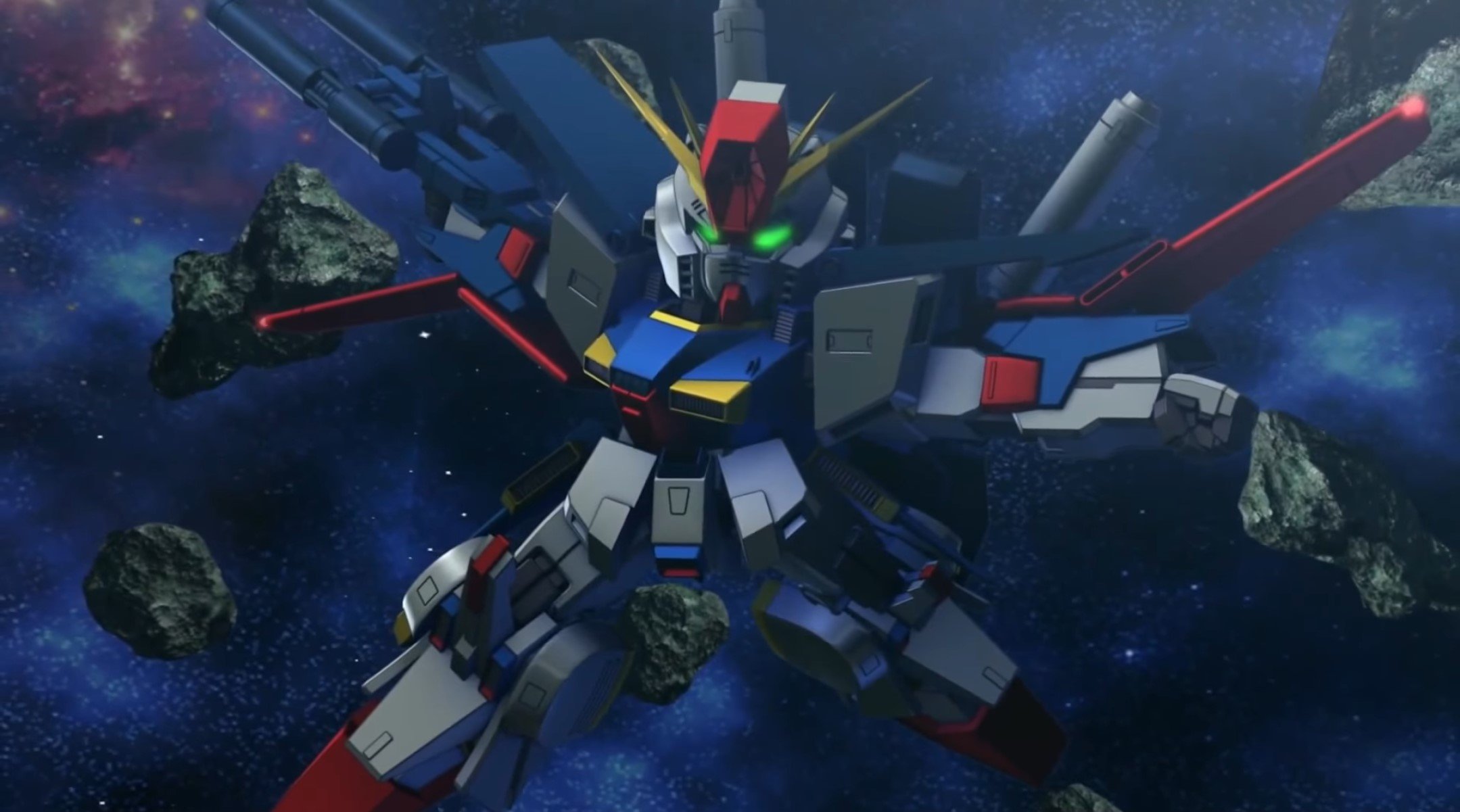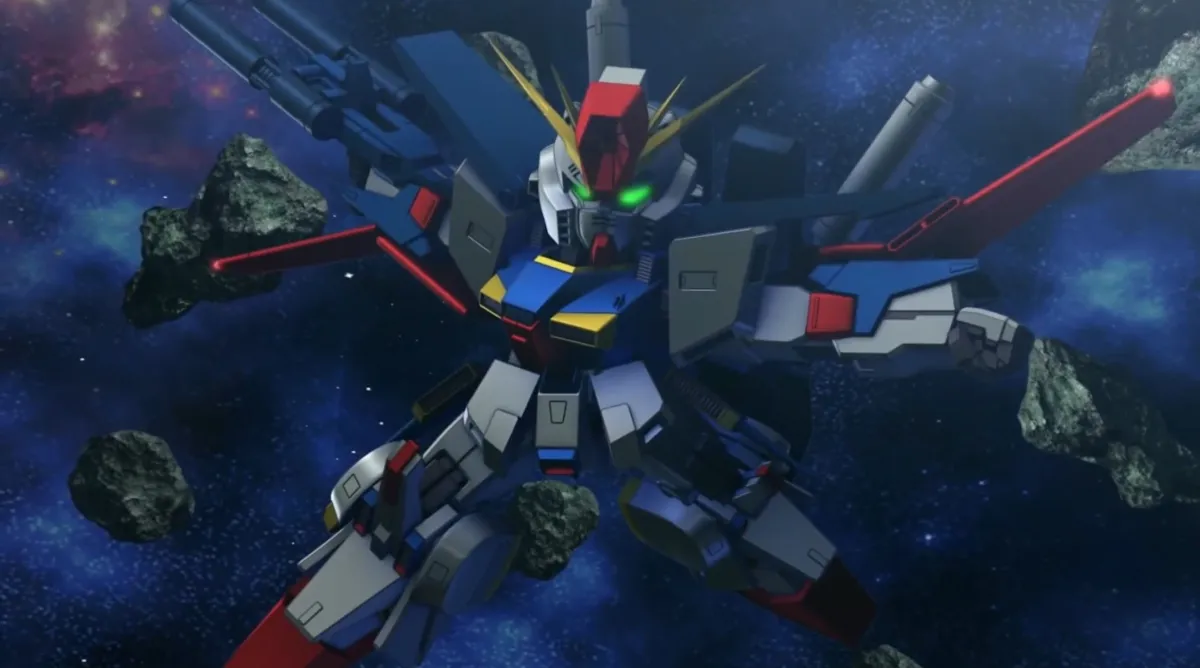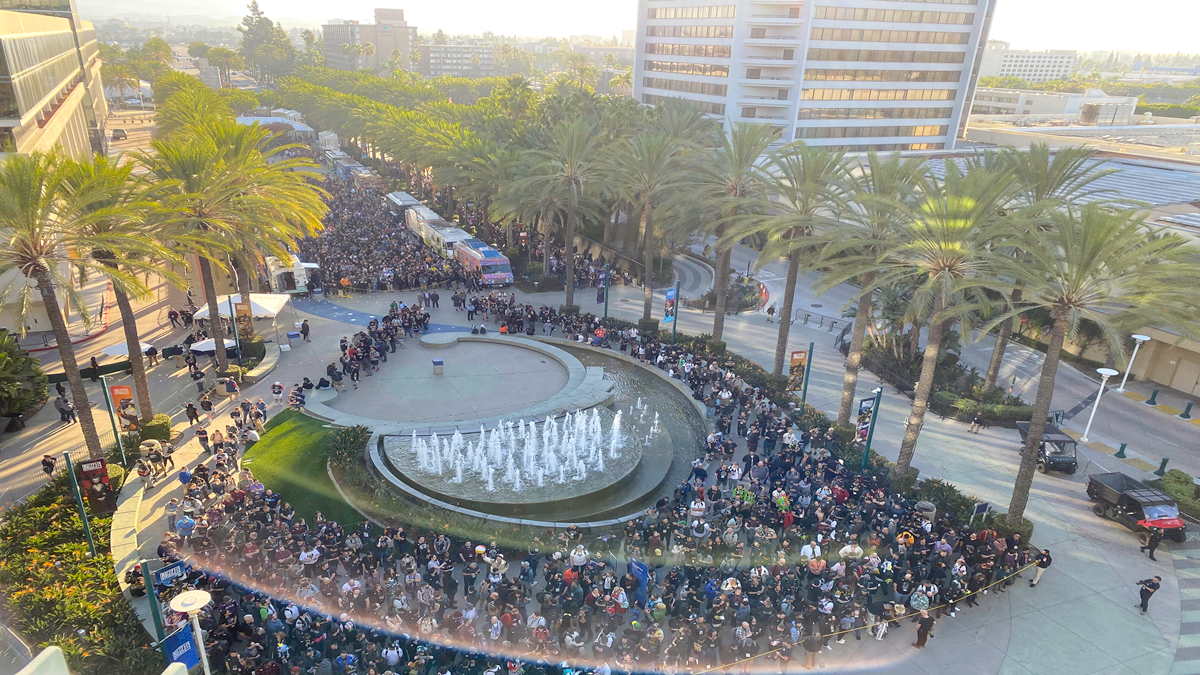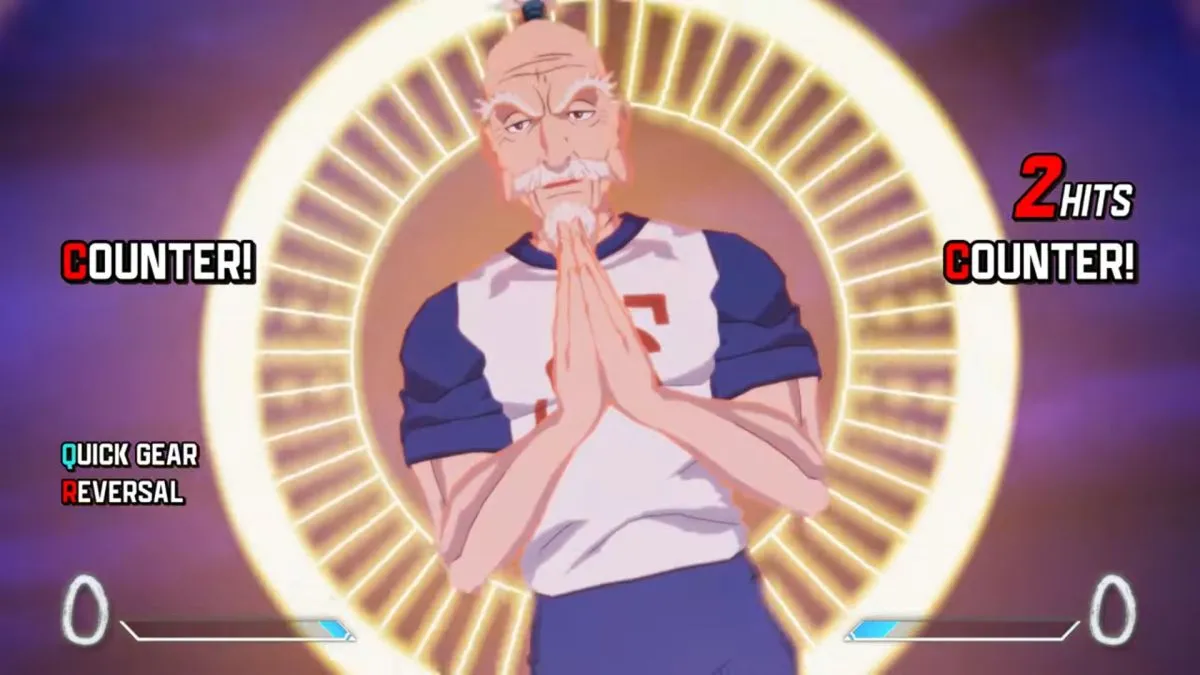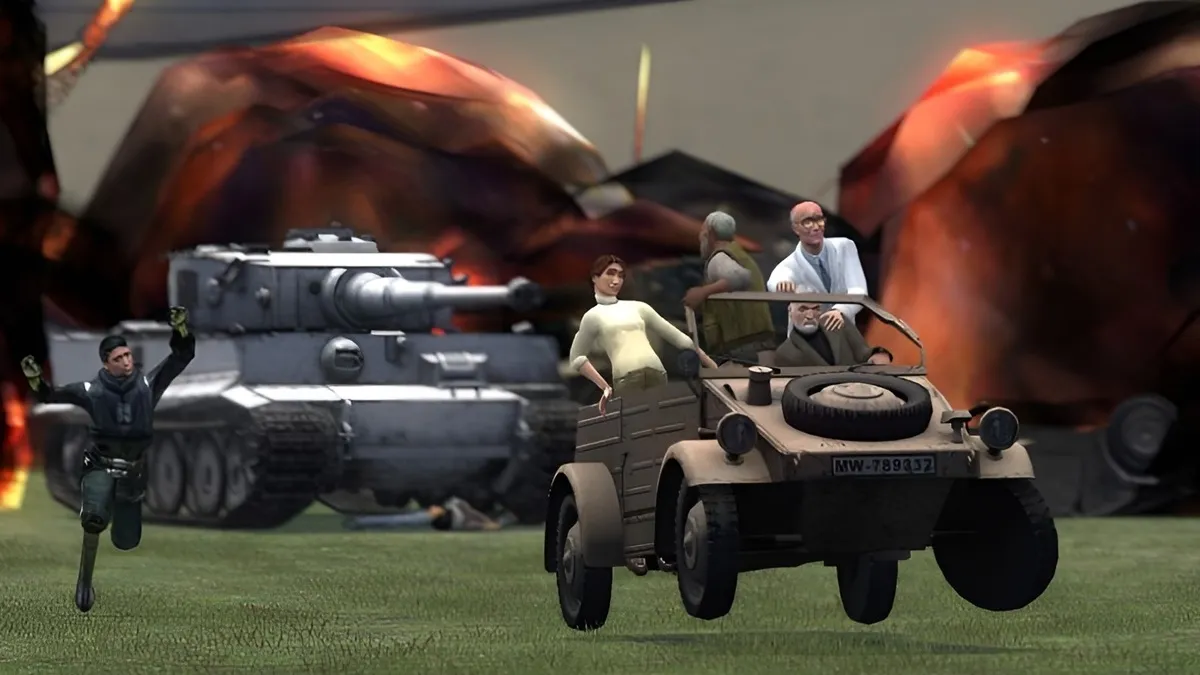Nu Gundam isn’t just for show!
It feels like SD Gundam G Generation Genesis is forgotten sometimes.
While it wasn’t the first of Namco’s licensed games to be translated in English for the Asia region – that honor goes to Gundam Breaker 3 and Super Robot Wars OG The Moon Dwellers – it was still one of the earliest ones. It played a major part in helping Namco realize how big the potential import market for Gundam games was in an era where all consoles were region-free and importing was easier than ever. Hell, it’s arguably one of the games that started getting titles like Versus released internationally.
Looking back on it three years later, it’s easy to see how this game helped keep that momentum, and how the SD Gundam franchise as a whole has managed to keep going for 20 years.

SD Gundam G Generation Genesis (PS4 [Reviewed], Vita)
Developer: Tom Create
Publisher: Bandai Namco
Released: November 22, 2016
MSRP: ~$50
The story of SD Gundam G Generation Genesis, which we’ll just call Genesis, is not an original one nor a singular plotline. Instead, it consists of 67 stages based on 17 different shows, movies, games, and more from the Universal Century timeline of the Gundam franchise. There is also a 68th one, with an original setting, acting as the final boss of the game. While the number of missions dedicated to each of the 17 entries varies, each one has at least two stages, and presents an abridged version of that storyline. Needless to say, if you don’t like an entry like Zeta or Unicorn, the game isn’t looking to present a version that will change your mind.
This method of compressing the stories has its advantages and disadvantages. Many entries make the transition perfectly fine. For a few entries, this transition does not go so smoothly, for better or worse. For ZZ Gundam, this method cuts out much of its more lighthearted and goofier early half, such as the Moon Moon arc, bringing its overall tone to be more in line with its predecessor Zeta Gundam. For the original show, the death of Lalah Sun, which haunts Char and Amuro for the rest of their lives, is reduced to a cutscene that removes much of its impact.
However, the entry that takes this change the hardest is 08th MS Team, which is a former shadow of itself. Having been reduced solely to two stages, it strips the show down to the bare bones in order to focus on the relationship between Shiro and Aina. Outside of the Gouf Custom fight, there are no other exceptions – every encounter is defined by Shiro and Aina. Terry, Karen, Eledore, and Michel lose all signs of character development, with Kiki and the guerrillas cut entirely from the game. It absolutely needed at least one more stage to avoid being too short for its own good.
As for the missions themselves, they are generally divided into two parts. One half has players commanding a squad comprised of units assigned by the story, while the other half has them leading a mix of story-units along with a custom squad that can be assembled between missions. Just like Super Robot Wars, battleships and VIP units will always need to be protected, in addition to other requirements – otherwise you’re looking at a game over. It should also be mentioned the game has a permadeath mechanic, where if a unit from that custom squad is shot down, that machine will be lost permanently and another one will have to take its place going forward.
Continuing the Super Robot Wars comparison, the entire game is a grid-based strategy RPG. As one would also expect, the performance of a unit is dependent on the stats the mech and pilot each contribute. Missions also have side objectives, which are often truer to the source. For instance, the first mission of the original show gives players Amuro in the RX-78-2 and asks them to defeat Denim who is piloting the Zaku II. However, the optional version asks the player to deal the finishing blow with the beam saber weapon, as it happened in the source material. Doing these optional objectives gives the player extra funds but also the possibility of an extra enemy squad spawning, which can be captured for personal use if its leader is defeated.
At this point, Genesis sets itself apart with not just different takes on some of these mechanics, but also a large variety of its own unique systems – so many that I can’t fit them all into this review and will only be focusing on a few. While the presentation for the maps could use some work, the game often breaks the map apart into segments. Sometimes these parts are connected, such as one area acting as a city for the ground troops, with another acting as the sky above it. In other cases, they’re not connected and used for plot purposes, so events can play out as intended. For instance, the finale of War in the Pocket has the custom squad in space playing the role of the Federation fleet that must prevent nukes from destroying the colony. Meanwhile, inside that very colony, the game assigns the player Christina in the Alex with the goal of taking down Bernie in his Zaku. It’s hard to get across in writing how effective this simple mechanic can be at times for making battles feel larger in scope, and also instrumental for keeping the smaller set-pieces of the source materials intact.

Let’s move onto the ships, which, as mentioned, still hold their VIP status. Due to changes in how unit sizes are handled, ships now take up multiple tiles, and must be rotated in order to aim certain attacks and navigate tight spaces. The stats of a ship aren’t determined by just the captain, but also the six other characters that help crew the ship. In fact, there’s a whole separate set of stats on characters for when they are part of a ship crew. These vessels are much more involved than before, and this is before getting into how they can launch group attacks on multiple enemy units along with being the main means of capturing surrendering units.
Plus, Genesis isn’t exactly generous with ammo for units. Every attack in the game uses energy and it’s the only ammunition type. When you start out, many units can only handle up to eight attacks before needing to refuel, and that’s with the weakest option. With fewer options to replenish energy, and skills that can potentially only be single-use, units will be making trips to the battleship frequently. This in turn encourages the player to be mindful of energy level and keep a rotation going during resupplies, in order to keep their ships safeguarded. Now this energy issue can be potentially fixed via grinding, but it’s often a slow process.
In addition to the pilots, all the mechs and ships are also able to level up. Upon doing so, the machines get a static bonus to all stats, including energy, but also points for the player to use to manually increase stats of their choice. As a stat is increased, it will start requiring more points to be invested per stat increase. This is balanced out by higher levels granting more points to be used to enhance the stats. Now it should go without saying, but a stronger unit like the Sazabi will take more experience than the Zaku II in order to level up. These levels also serve a different purpose between battles, which we’ll get to momentarily.

Between missions, players will spend a lot of time assembling, growing, and training their custom team. While they’ll initially start with original characters and machines from the SD Gundam series, they’ll slowly grow a roster of dozens of iconic characters and over 400 machines and ships that can recruited and deployed in any manner. A large part of the roster is also from series that do not have story missions in the game, like Gundam Sentinel or the Psyco Gundam Mk-III from the Battle Assault series. There are no restrictions here, with even crazy what-ifs being possible like putting Al from War in the Pocket in the Alex, and players are encouraged to mix and match as they please.
This is also where the other benefit of mobile suits leveling up comes into play. Every mobile suit has a development plan where, once they reach specific levels, they can be changed into different machines. While this process resets them to level 1 and undoes the manual stat growth, it’s also the fastest and most efficient way for growing the roster and reaching endgame units such as the Unicorn Gundam trio, which includes the Phenex as depicted in the MSV design books. Once a unit is unlocked, it is added to the factory list, where it can be freely purchased from then on. There are other ways of unlocking units, including an exchange and fusion-esque systems, but there is one that’s not particularly efficient.
The game has a mechanic called the Get Gauge, which appears only on story units. When a story unit defeats a foe, a part of the gauge is filled. Once it’s maxed out, the unit is added to the factory list, where it can be freely purchased if players have the funds. This is a good shortcut that cuts out the grinding for stronger units like the Zeta Gundam. However, if the meter isn’t filled by the end of the mission, it resets. This can be frustrating as units only receive experience from kills, and it denies the custom squad potentially dozens of kills in order to fill out this gauge. To accidentally end a mission early and see all of that time and effort can go to waste feels awful. While many machines can still be obtained without dealing with this mechanic, it’s a must for pilots.

The game has a quest system in place, with over 200 of them to complete. These little side tasks range from ‘obtain x unit’ to requiring players to complete stages while following a specific set of instructions. All of the non-SD Gundam characters, excluding Haro, are locked behind these quests. For many of the protagonists, they are locked behind quests that require the Get Gauge to be filled for a unit they pilot. This means for Char and Amuro in their Char’s Counterattack incarnations, there is only one stage for each of them where this quest can be completed. Whether it’s because of the Get Gauge or quests with conflicting goals, some stages will need to be played at least twice to in order to complete this list.
Now, there are some other issues, but their impact will vary from person to person. Most of them don’t get in the way of the gameplay itself, but they are major enough to warrant mentioning. The most notable of these is the game’s subtitles. While the menus, cutscene dialogue, and pilot cut-ins have a perfectly fine English translation, the battle animations do not have subtitles. This is a major blow to those animations. Without the dialogue, characters that do not partake in the included stories, like the Gundam Sentinel or SD Gundam ones, remain these undefined random characters that can’t show any sense of personality to players.

Furthermore, the animations in Genesis are not consistent. Some of the attack animations are performed by 3D models, while others are by 2D sprites of the models. The two feel dramatically different, especially when the attacks using 2D sprites aren’t necessarily as dynamic or have as many frames of animation as their 3D brethren. It’s especially jarring when an attack starts out as one before transitioning to the other. Trying to have the best of both styles doesn’t work; it should have been only one or the other.
Finally, the ability to see the range of attacks has a glaring omission. When players are in a mission, they are not only able to see the range of an attack in text, but also a visualization of its range. This is important because not all attacks have a range based on a diameter around the unit. Sometimes it can be a straight line from the unit, which is frequent for ships, or something ridiculous like a checkerboard pattern. Outside of stages, these options do not exist. In between battles, Genesis will only give its range, but not the shape of that range, and it will give nothing for map attacks. It’s annoying to get new mobile suits and ships when it’s not possible to tell what they’re capable of without wasting time going into a map and figuring this out.
While SD Gundam G Generation Genesis has issues, it’s still a good game at its core. The mission formatting, multiple difficulties, side objectives, and mechanics will give all players, regardless of Gundam knowledge, a great time. Plus, the large roster containing hundreds of characters and machines will give Gundam fans plenty of fanservice to enjoy, and numerous custom squad possibilities to run in terms of stats for even non-Gundam fans. However, the abridged storytelling and tailoring to fans of the Universal Century timeline might limit how much enjoyment both parties can get out of Genesis.
[This review is based on a retail build of the game purchased by the reviewer.]
